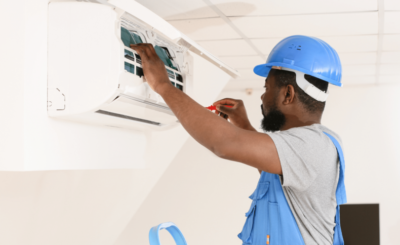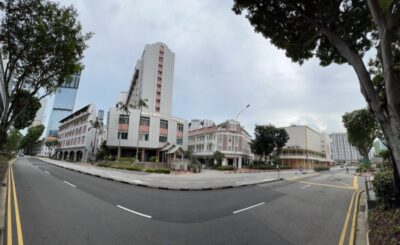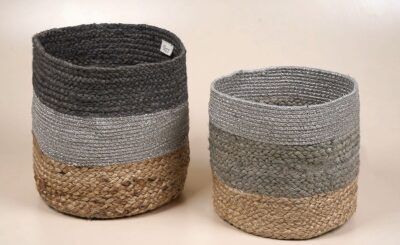Table of Contents
Are you a business owner in Los Angeles looking for the best heating and cooling system for your commercial building? Look no further than VRF Systems. VRF, or Variable Refrigerant Flow, is a highly efficient HVAC system that provides both heating and cooling to your entire building. In this blog, we will cover everything you need to know about VRF systems, including its basic operations, advantages over traditional HVAC systems, and why it’s the preferred choice for commercial buildings in Los Angeles. We’ll also delve into topics like energy efficiency, cost savings, flexibility, and scalability of Commercial VRF System in Los Angeles systems. Read on to learn how you can benefit from VRF technology and make your commercial space more comfortable and energy-efficient.
Understanding VRF Systems
VRF systems use variable refrigerant flow for efficient energy usage. They provide heating, cooling, and ventilation in commercial buildings through indoor units that cool air effectively. The ductless design takes up less space and offers higher ceilings to comply with building codes. This new HVAC system improves HVAC efficiency and eliminates the need for extensive ductwork, making it ideal for commercial buildings in Los Angeles, CA.
Basics of VRF Systems
VRF systems operate on variable refrigerant flow, effectively cooling indoor spaces. Using thermostat control for energy efficiency, these systems offer heating and cooling in commercial buildings. Their design adapts to the energy consumption needs of commercial settings, making them a preferred choice. With a ductless system and efficient airflow, VRF systems provide new HVAC solutions with enhanced HVAC efficiency, making them ideal for commercial buildings.
VRF System Operations in Commercial Settings
VRF system operations in commercial settings ensure precise cooling and energy efficiency. These systems support efficient cooling of large commercial spaces, providing cost savings. The refrigerant flow of VRF systems improves indoor air quality, delivering both cooling and heating to meet the energy demands of commercial buildings. Utilizing thermostat control for energy efficiency, VRF systems offer flexible and scalable HVAC solutions, making them the preferred choice for commercial buildings in Los Angeles.
Advantages of Commercial VRF Systems
The energy-efficient ductless system of a new HVAC system significantly reduces energy costs for commercial buildings. Its flexibility and scalability make it ideal for various ductwork configurations, while the efficient VRF system design caters to cooling and heating needs. This results in enhanced HVAC efficiency and energy consumption reduction, offering substantial cost savings for commercial properties in CA.
Energy Efficiency and Cost Savings
Energy efficiency in ductless systems like VRF leads to substantial cost savings, making new HVAC systems a preferred choice for commercial buildings in CA. The system’s refrigerant flow contributes to lower energy consumption, reducing cooling and heating costs. Additionally, VRF’s HVAC efficiency enhances overall cooling and heating operations, providing significant energy and cost savings for businesses.
Flexibility and Scalability of VRF Systems
VRF systems enable efficient cooling and heating for commercial buildings, offering adaptable solutions for energy consumption needs. The scalability of VRF systems supports energy efficiency, while their flexibility ensures effective heating and cooling. These systems cater to the specific energy requirements of commercial buildings, enhancing HVAC efficiency. The ductless system design and new HVAC system integration contribute to the overall efficiency and cost-effectiveness in commercial settings.
Why is VRF the Preferred Choice for Commercial Buildings in Los Angeles?
VRF systems are the preferred choice for commercial buildings in Los Angeles due to their exceptional energy efficiency. The system’s refrigerant flow and design cater to the cooling and heating needs of commercial spaces, aligning with energy costs and consumption. VRF systems offer optimal solutions for maintaining a comfortable indoor environment while reducing energy bills.
What is commercial VRF and how does it work?
Commercial VRF, or Variable Refrigerant Flow, is an HVAC system that uses refrigerant to transfer heat between indoor and outdoor units. This allows for individual temperature control in different areas. With energy efficiency, cost savings, and zoning capabilities, VRF systems are a popular choice in commercial buildings.
What are the benefits of using commercial VRF in Los Angeles?
Benefits of using commercial VRF in Los Angeles include energy efficiency, resulting in lower utility bills. With zoned cooling and heating, occupants experience increased comfort levels. The flexibility and modularity of VRF systems make them easy to install and maintain. Advanced controls offer precise temperature and humidity control.
How does commercial VRF compare to other HVAC systems in terms of efficiency and cost?
Commercial VRF systems outperform traditional HVAC systems in terms of efficiency and cost. With individual zone control, VRF systems save energy and reduce operating costs. Although initial installation costs may be higher, the long-term savings outweigh the investment. Consult an HVAC professional for the best system for your commercial building needs.
What is VRF and how does it work?
VRF, or Variable Refrigerant Flow, is a heating and cooling system that transfers heat between indoor and outdoor units using refrigerant. It allows for precise temperature control in different areas by operating at varying capacities. VRF systems are known for their energy efficiency and cost-effectiveness in commercial buildings.
What are the advantages of using VRF in a commercial building?
VRF systems offer precise temperature control in different zones, resulting in energy efficiency. They provide flexibility for installation in new and existing buildings. With low maintenance and a longer lifespan than traditional HVAC systems, VRF systems also offer quiet operation and improved indoor air quality.
Are there any specific regulations or requirements for installing VRF systems in Los Angeles?
Yes, there are specific regulations and requirements for installing VRF systems in Los Angeles. The Los Angeles Department of Building and Safety has guidelines for mechanical equipment installations that VRF systems must meet. VRF systems must also comply with energy efficiency standards set by the California Energy Commission. It is important to work with a licensed contractor who is knowledgeable about these regulations when installing a VRF system in Los Angeles.
VRF systems offer numerous benefits for commercial buildings in Los Angeles. With their energy efficiency and cost savings, they help businesses reduce their operational expenses while also being environment-friendly. The flexibility and scalability of VRF systems make them an ideal choice for commercial settings as they can cater to the varying cooling and heating needs of different spaces within a building. Additionally, their zoning capabilities allow for customized comfort, ensuring optimal conditions for occupants. Overall, VRF systems are a smart investment for businesses in Los Angeles, providing efficient and sustainable solutions for their HVAC needs.






